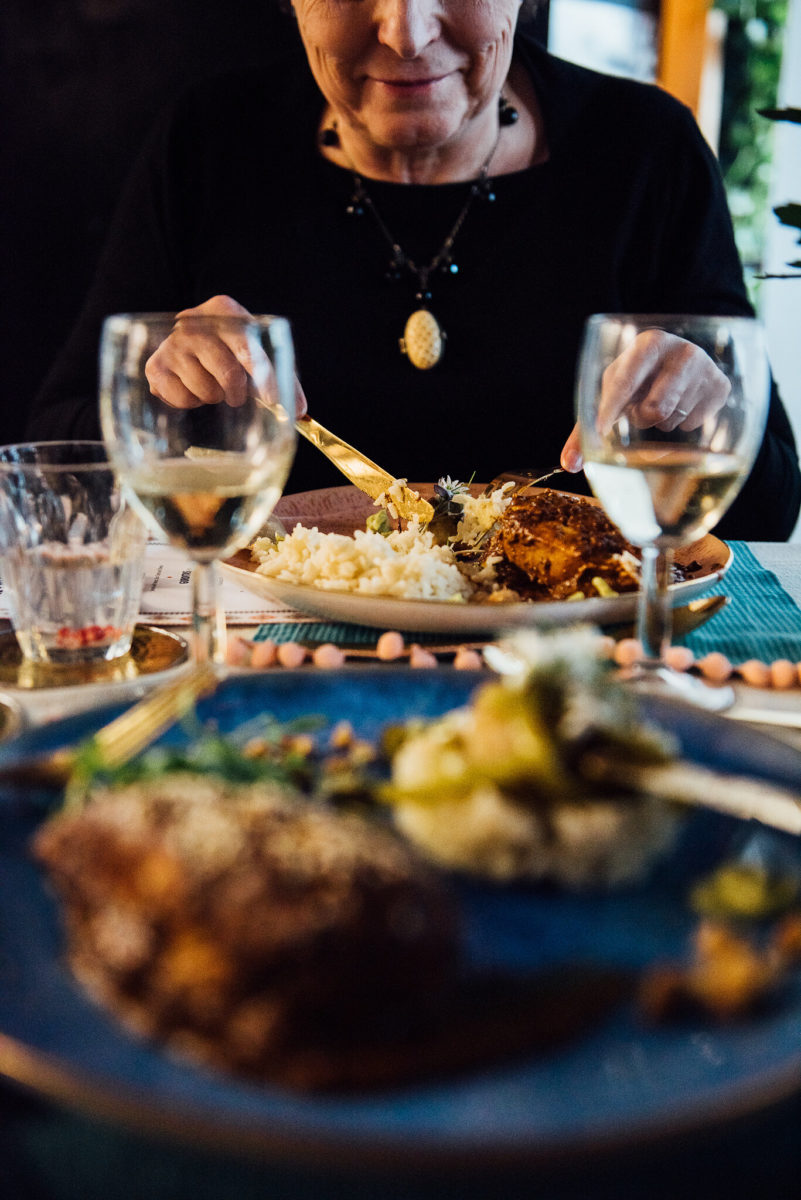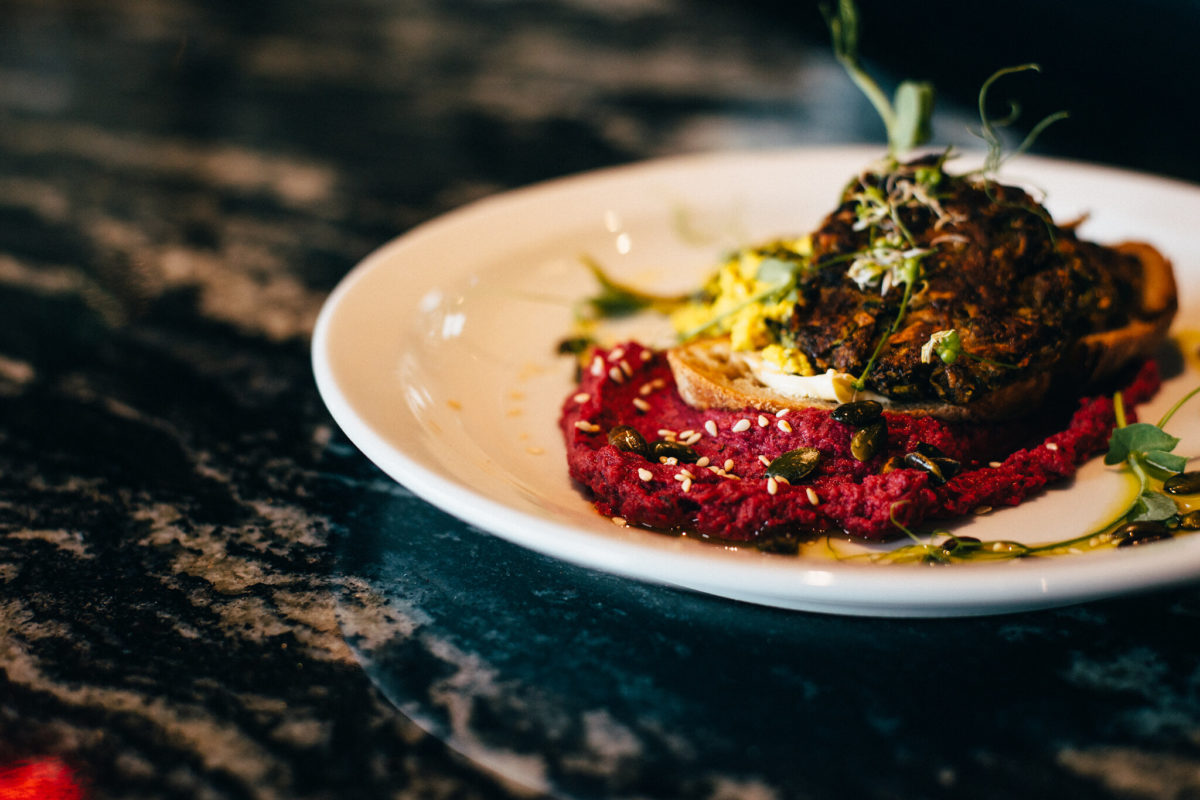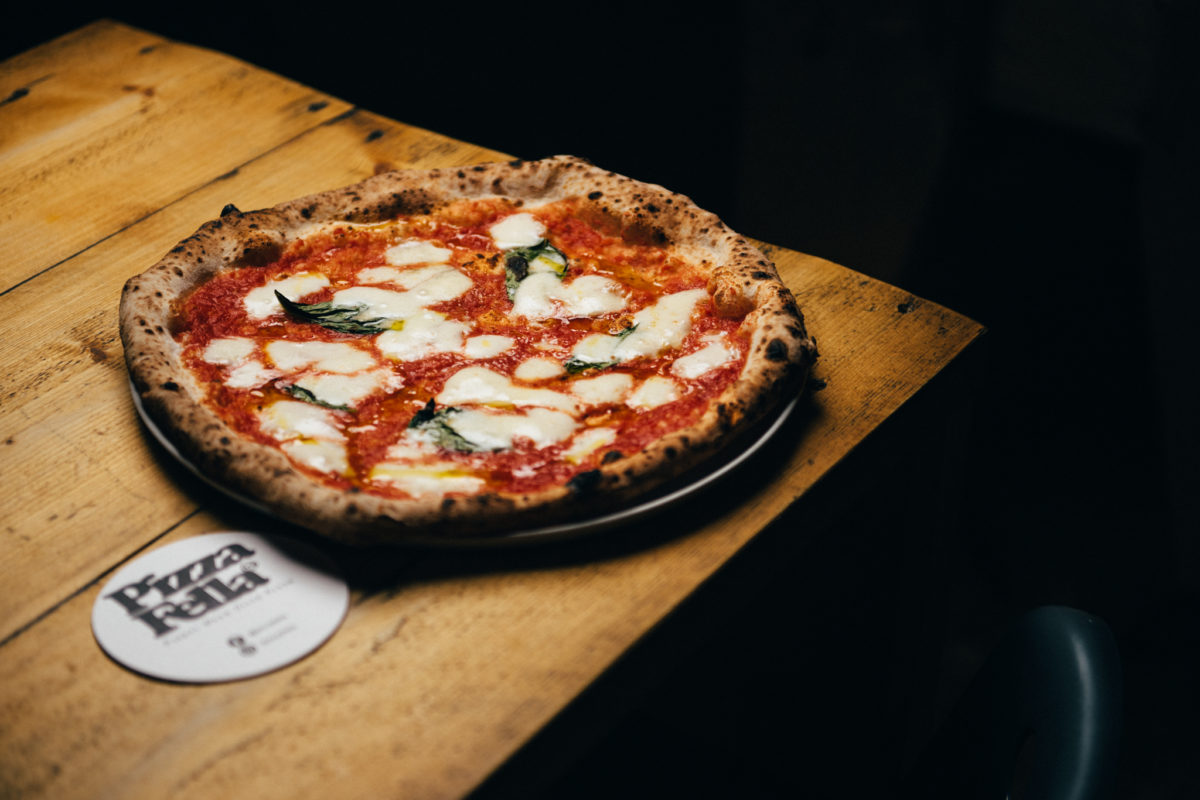January 7, 2020
Best Diets that Work


Since a lot of our work revolves around shouting about amazing indie foodies, it’s no surprise that we end up a bit full now and then! It can be pretty easy to lapse into eating without control – so we’ve had a bit of a research into some of the popular ways to keep our bodies and minds healthier. We have plenty of different diets in the office, from vegans to pescatarians to meat eaters and flexitarians – and from committed homecooks to those more likely to indulge in some takeout!
January’s a time when a lot of us seem to need a break from the indulgence – so we thought we’d do a bit of research into some popular diets and the ideas behind them, to work out the best diets to choose from.
5:2 Diet
The 5:2 Diet pioneered by Michael Mosley scientifically explored the cultural traditions of intermittent fasting around the world, and found that periods of fasting were really good for weight loss, but also for brain health and overall wellness. Intermittent fasting, contrary to what we’ve been told about ‘always eating your breakfast’, is a great way to give your system a break, allowing inflammatory markers to settle, improve your blood pressure and cholesterol levels, and improve insulin sensitivity. It is based around eating normally (not over-eating!) for 5 days, and eating ¼ of your usual calorie needs for 2 separate days per week – that’s usually 500 calories for women and 600 for men.
How do you do it?
This is the diet for people with busy social lives. You don’t have to restrict anything 5 days a week – but on two days a week you are super-controlled. Many find the easiest way to manage on 500 calories is to skip or delay breakfast until late morning. Some will simply eat a reasonably large meal at dinner time, but others prefer two lighter meals to avoid having too many tummy grumbles.
We’ve got direct experience of this, and can definitely agree that it both shifts weight and re-calibrates your hunger pangs. It’s certainly amongst the best diets for some of the team – especially if you struggle with ongoing abstinence. It can be much easier to be harsh on yourself 2 days a week and then eat normally for the rest of the time.
DO EAT:
Energy-rich foods like bananas, fish, oats and eggs. Drink plenty of water to fill your belly (a homemade soup can be a great meal option for this reason). Eat plenty of low-calorie greens to bulk up your plate (there are only 8 calories in 50g of lettuce, for example). Coffee and tea are fine, but if you usually have milk either choose not to on fast days or be careful to measure and count the calories (a dash of semi-skimmed in your tea sets you back 14 calories, more like 40 if you have a milky coffee)!
EAT RARELY/MODERATELY:
Meats. Your calories will tend to go further if you go veggie on fasting days, but if you do choose to eat meat opt for less calorie-dense options, or those that provide a great energy release, like chicken or salmon.
DON’T EAT:
Don’t waste calories on sugar and alcohol – they will leave you feeling hungry and your calorie count depleted!
These BBC Good Food recipes all come in under 250 calories so you could have 2 meals per day.
Mediterranean Diet
Health magazine’s research suggests that the Mediterranean Diet was the best diet of 2019, ranking no.1 for easiest diet to follow, best for healthy living, tied best for heart health and best for diabetes. The Med has long been regarded as a base for some of the world’s best diets, with their easy access to sun and sea making fish and veggies front and centre. It’s a diet based on what the population of countries like Italy and Greece ate back in the 60s. It’s a little controversial, since the countries of the Mediterranean obviously didn’t (and don’t) all eat the same way, even back then – but most of the studies have focussed on a diet heavy on vegetables, low on animal foods and with fish and seafood at least twice a week.
How do you do it?
The Mediterranean Diet is rich in fruit and vegetables, healthy fats and whole grains.
DO EAT:
Vegetables, fruits, nuts, seeds, legumes, potatoes, whole grains, breads, herbs, spices, fish, seafood and extra virgin olive oil.
EAT IN MODERATION:
Poultry, eggs, cheese and yoghurt. A glass of red wine every day is allowed if you fancy!
EAT RARELY:
Red meat.
DON’T EAT:
Any added sugars, processed meat (no processed sausages, hot dogs etc), refined grains (no pasta or bread made with refined grains), refined oils and trans fats (no margarine, canola oil, soybean oil etc) and any highly processed foods.
DASH Diet
The DASH Diet (Dietary Approach to Stop Hypertension) was designed to bring down hypertension and the associated risks of cholesterol and heart disease, using a diet based around vegetables, fruits, whole grains and lean meats. The diet was created when researchers realised that high blood pressure is much less common in those following a plant-based diet – ie vegans and vegetarians. The DASH diet does allow some lean meat proteins, like chicken and fish, but is low in red meat, salt, added sugars and fat. DASH’s intent isn’t to help you lose weight, it’s aiming to be one of the best diets to improve cardiac health – but weight loss could be an added benefit.
How do you do it?
DASH is quite specific about portion size, recommending a variety of food groups daily in specific amounts, depending on your daily calorie intake needs (determined by your age, sex and activity level). For example, if you needed 1600 calories daily according to DASH, the diet would recommend 6 servings of grains, 4-5 servings of vegetables, 4 servings of fruit and 2-3 servings of low-fat dairy, with 3-4oz daily of lean meat, poultry or fish, 2 servings of fats and oils, and 3-4 servings of nuts, seeds and legumes per week.
It has some drawbacks, in that it doesn’t support you eating too many healthy fats, which are usually recommended by health practitioners.
DO EAT:
Fruit and veg, and whole grains (wholegrain breads, brown rice, bulgur wheat, quinoa and oatmeal, for example).
EAT RARELY/MODERATELY:
Fats from seeds, nuts and legumes, and fatty dairy.
DON’T EAT:
Sugar. DASH recommends 3 or fewer servings per week of sweet things, and also suggests limiting sodium (ie salt) to a maximum or 2.3g per day.
See a sample DASH week’s menu example here.
16/8 Diet
The 16/8 Diet again comes back to intermittent fasting – but unlike the 5:2 diet, there isn’t any one day where you really restrict yourself. Instead, you simply only eat in a daily window of 8 hours. That can work however you like – starting early and finishing early, or not breaking your fast until around lunchtime if you prefer to eat later in the evenings. Most people find a window like 11-7 or 12-8 pretty suitable, but kicking off with breakfast at 9 and finishing off with a light tea around 5 fits those who feel they can’t get going in the morning until after breakfast. The 16/8 is another of the tried-and-tested best diets in the C81 office – like the 5:2, the intermittent fasting seems strangely energising, and seems to give you a greater control over your appetite.
The theory is that widening the gap between meals like this gives your body more chance to tap into fat reserves (moving towards ketosis) rather than simply burning the sugar from the food you’re constantly stocking your body with (many foods ultimately break down into sugar – glucose – because many foods contain carbs, including many fruits and veggies). By actually getting hungry, these intermittent fasting diets can also help you understand the difference between ‘habit’ hunger (“it’s lunchtime, I need a sandwich”) and real hunger.
The benefits of the 16/8 diet are similar to with 5:2; improving your health overall as well as helping you sustainably lose weight. The benefit is that the 16/8 diet doesn’t come with any calorie restrictions – though obviously if you go mad you’re not going to see the results you’re after. If you’re attempting to lose weight, you should focus on nutrient-dense foods during your eating window – think veggies, fruits, nuts, beans, seeds, wholegrains, dairy and lean proteins.
Whether you choose an earlier or later window, 16/8 plans tend to recommend that you eat several small meals and snacks throughout your 8 hours of eating to keep hunger under control and blood sugar levels balanced.
How do you do it?
If you’re starting late, you can enjoy one cup of tea or coffee with milk – this won’t break your fast. You can drink as much herbal tea, black coffee, and water as you like. Kick off with a healthy lunch around 12.30, and finish up by 7.30pm. Whilst there’s no diet plan or strict restrictions, limiting your food window likely means you’re only eating two meals per day, so make sure you’re filling your body with enough vegetables and fruit, as well as healthy fats from fish, oils, nuts and seeds, and protein. Low GI, slow-release energy foods are a good idea for the last meal of the day, too, to get you through that morning fast time.
DO EAT:
Nutrient-dense foods, and plenty of fruit and vegetables. Drink plenty of water.
EAT RARELY/MODERATELY:
There are no rules, but sugars are not going to do you any good.
DON’T EAT:
Outside your fasting period!
Here’s an Intermittent Fasting round-up that outlines the benefits of several different foods to help you lose weight as well as improve your overall health.
Keto Diet
The Ketogenic Diet is very popular, but it can be controversial. It’s a low-carb, high-fat diet (which most dieticians now recommend), but it is based upon a drastic carb reduction, and many dieticians still note the importance of maintaining some carbohydrates in your diet. The carb reduction is so drastic with the Keto Diet that many veggies and all fruits (bar a few berries) are no-go, due to their containing carbohydrates. This drastic carb reduction puts your body into a metabolic state called ketosis, where your body burns its own fat for energy, rather than glucose from your meals (carbohydrates all break down into glucose – otherwise known as sugar).
Like with any diet, you need to get the right proportion of macronutrients (fat, protein and, usually, carbs) in order for your body to start burning your fat stores instead of the stored glucose from carbohydrates you’ve eaten – but with Keto, the amount of fat you will be eating is a lot higher than in many diets. Keto suggests getting 60-75% of your calories from fats – but it’s all about getting those fats from the right sources. The effect of saturated fats is still up for debate, but it’s definitely the trans fats you really want to avoid (found in things like hydrogenated oils and spreads, and processed foods) – as these do your body no good, and increase your risks of cancer, amongst other things.
How do you do it?
You basically eradicate carbs from your diet. The best low-carb foods include greens like spinach, rocket and kale, and veggies like peppers, cauliflower and courgette. Start by gradually reducing your carb intake to 20g over 2 weeks, before you cut them out. Realistically you’ll still be getting around 5% of your calories from carbs, as they are present in plenty of fruits and veg. You’ll also need breaks from the Keto Diet (‘ketosis holidays’), where you add a serving of unprocessed wholegrains, to allow your body a break. Prolonged ketosis can cause muscle aches, nausea and fatigue.
DO EAT:
Cruciferous veg (broccoli, cabbage, Brussels sprouts, kale), red peppers, asparagus, mushrooms, courgette, spinach, avocado, cauliflower, green beans, lettuce, cucumbers, tomatoes, aubergines, garlic, artichokes…and then fats like eggs, poultry, full-fat dairy, red meats, fatty fish, nuts and seeds, nut butters and other (healthy) fats.
EAT RARELY/MODERATELY:
Seafood and fish (a couple of times a week. Squid has 3g carb per 100g serving, for example, so is quite low in carbs). Starchy vegetables (potatoes, yams, sweet potatoes, etc) can take up your entire day’s carb allowance, so be careful.
DON’T EAT:
Sugary foods, fruits, grains like rice, pasta and cereal, beans and legumes like peas, kidney beans, lentils and chickpeas, root veggies like carrots, potatoes, parsnips and sweet potatoes, low-fat/diet products (which often replace fats with sugars or carbs), alcohol, or unhealthy fats.
Ultimately, your diet plan’s success will totally depend on your outlook and your habits – but hopefully the above will help you work out what diet might suit you, so you can be your healthiest self for 2020 (and leave some space for occasional treats from the likes of Leeds Indie Food, Bundobust, The Owl and Sarto! Everything in moderation…)







